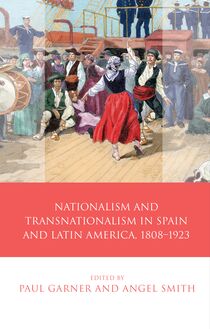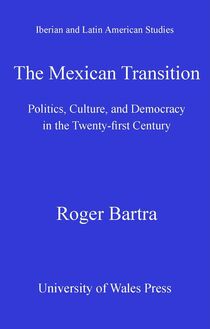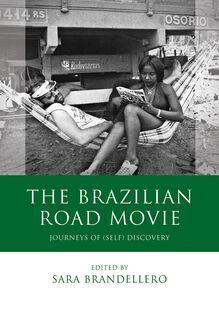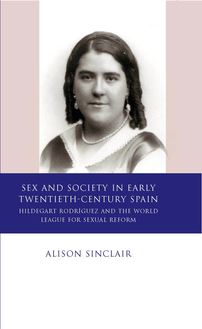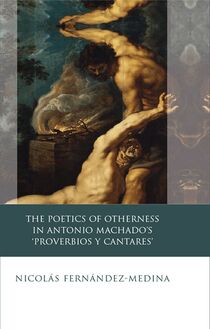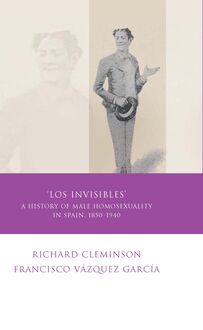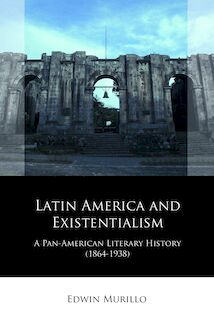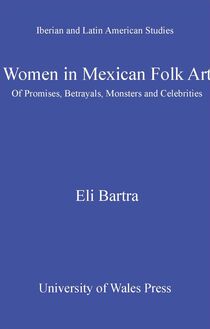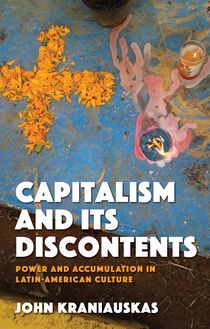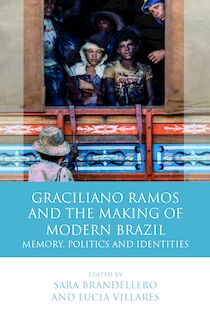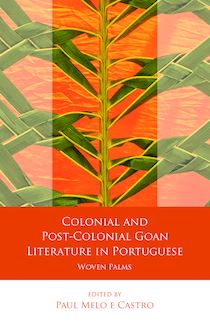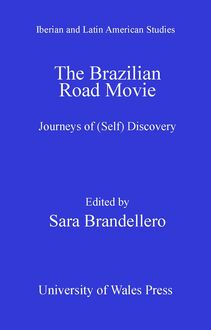Ophelia , livre ebook
154
pages
English
Ebooks
2020
Vous pourrez modifier la taille du texte de cet ouvrage
Obtenez un accès à la bibliothèque pour le consulter en ligne En savoir plus
Découvre YouScribe en t'inscrivant gratuitement
Découvre YouScribe en t'inscrivant gratuitement
154
pages
English
Ebooks
2020
Vous pourrez modifier la taille du texte de cet ouvrage
Obtenez un accès à la bibliothèque pour le consulter en ligne En savoir plus
Publié par
Date de parution
15 mai 2020
Nombre de lectures
1
EAN13
9781786836007
Langue
English
Poids de l'ouvrage
3 Mo
It is astonishing how deeply the figure of Ophelia has been woven into the fabric of Spanish literature and the visual arts – from her first appearance in eighteenth-century translations of Hamlet, through depictions by seminal authors such as Espronceda, Bécquer and Lorca, to turn-of-the millennium figurations. This provocative, gendered figure has become what both male and female artists need her to be – is she invisible, a victim, mad, controlled by the masculine gaze, or is she an agent of her own identity? This well-documented study addresses these questions in the context of Iberia, whose poets, novelists and dramatists writing in Spanish, Catalan and Galician, as well as painters and photographers, have brought Shakespeare’s heroine to life in new guises. Ophelia performs as an authoritative female author, as new perspectives reflect and authorise the gender diversity that has gained legitimacy in Spanish society since the political Transition.
Epigraph
[Series Forward]
Acknowledgements
List of Figures
Introduction
Chapter 1: Breaking Silence: Ophelia in the Lyric Tradition of Spain and the Pioneer Innovations of Blanca de los Ríos
Chapter 2: Talking Back: Ophelia in Turn-of-the-Millennium Poetry
Chapter 3: The Myth of Ophelia in the Narratives of Clara Janés and Menchu Gutiérrez
Chapter 4: Ophelia Takes Center Stage
Chapter 5: From Madwoman to Cyborg: Artist Marina Núñez’s Ophelias
Chapter 6: Ophelia in Front of the Camera
Epilogue: Ophelia: Refigurations in the Arts, Reiterations in the Fashion Industry
Bibliography
Publié par
Date de parution
15 mai 2020
Nombre de lectures
1
EAN13
9781786836007
Langue
English
Poids de l'ouvrage
3 Mo
IBERIAN AND LATIN AMERICAN STUDIES
Ophelia
Series Editors
Professor David George (Swansea University)
Professor Paul Garner (University of Leeds)
Editorial Board
Samuel Amago (University of Virginia)
Roger Bartra (Universidad Autónoma de México)
Paul Castro (University of Glasgow)
Richard Cleminson (University of Leeds)
Catherine Davies (University of London)
Luisa-Elena Delgado (University of Illinois)
Maria Delgado (Central School of Speech and Drama, London)
Will Fowler (University of St. Andrews)
David Gies (University of Virginia)
Gareth Walters (Swansea University)
Duncan Wheeler (University of Leeds)
Other titles in the series
Madness and Irrationality in Spanish and Latin American
Literature and Culture
Lloyd Hughes Davies
Fantastic Short Stories by Women Authors from
Spain and Latin America: A Critical Anthology
Patricia Gracía and Teresa López-Pellisa
Carmen Martín Gaite: Poetics, Visual Elements and Space
Ester Bautista Botello
The Spanish Anarchists of Northern Australia:
Revolution in the Sugar Cane Fields
Robert Mason
Paulo Emilio Salles Gomes: On Brazil and Global Cinema
Maite Conde and Stephanie Dennison
The Tlatelolco Massacre, Mexico 1968, and the Emotional
Triangle of Anger, Grief and Shame: Discourses of Truth(s)
Victoria Carpenter
The Darkening Nation: Race, Neoliberalism
and Crisis in Argentina
Ignacio Aguiló
IBERIAN AND LATIN AMERICAN STUDIES
Ophelia
Shakespeare and Gender in Contemporary Spain
SHARON KEEFE UGALDE
© Sharon Keefe Ugalde,
All rights reserved. No part of this book may be reproduced in any material form (including photocopying or storing it in any medium by electronic means and whether or not transiently or incidentally to some other use of this publication) without the written permission of the copyright owner. Applications for the copyright owner’s written permission to reproduce any part of this publication should be addressed to the University of Wales Press, University of Wales Registry, King Edward VII Avenue, Cardiff CF10 3NS.
www.uwp.co.uk
British Library CIP
A catalogue record for this book is available from the British Library.
ISBN 978-1-78683-598-7
e-ISBN 978-1-78683-600-7
The right of Sharon Keefe Ugalde to be identified as author of this work has been asserted in accordance with sections 77 and 79 of the Copyright, Designs and Patents Act 1988.
The publisher has no responsibility for the persistence or accuracy of URLs for any external or third-party internet websites referred to in this book, and does not guarantee that any content on such websites is, or will remain, accurate or appropriate.
Cover image: Marina Núñez, Sin título (muerte) , 1994, oil on satin fabric © the artist, reproduced by permission.
Contents
Series Editors’ Foreword
Acknowledgements
List of Figures
Introduction
1 Breaking Silence: Ophelia in the Lyric Tradition of Spain and the Pioneer Innovations of Blanca de los Ríos
2 Talking Back: Opheliain Turn-of-the-Millennium
3 The Myth of Ophelia in the Narratives of Clara Janés and Menchu Gutiérrez
4 Ophelia Takes Centre Stage
5 From Madwoman to Cyborg: Artist Marina Núñez’s Ophelias
6 Ophelia in Front of the Camera
Epilogue
Ophelia: Refigurations in the Arts, Reiterations in the Fashion Industry
Notes
Bibliography
Series Editors’ Foreword
Over recent decades the traditional ‘languages and literatures’ model in Spanish departments in universities in the United Kingdom has been superseded by a contextual, interdisciplinary and ‘area studies’ approach to the study of the culture, history, society and politics of the Hispanic and Lusophone worlds – categories that extend far beyond the confines of the Iberian Peninsula, not only in Latin America but also to Spanish-speaking and Lusophone Africa.
In response to these dynamic trends in research priorities and curriculum development, this series is designed to present both disciplinary and interdisciplinary research within the general field of Iberian and Latin American Studies, particularly studies that explore all aspects of Cultural Production (inter alia literature, film, music, dance, sport) in Spanish, Portuguese, Basque, Catalan, Galician and indigenous languages of Latin America. The series also aims to publish research in the History and Politics of the Hispanic and Lusophone worlds, at the level of both the region and the nation-state, as well as on Cultural Studies that explore the shifting terrains of gender, sexual, racial and postcolonial identities in those same regions.
With insolence and shallowness – don’t touch!
(A teenager’s attic stores!)
You have already lain – on this breast
Like some weighty chronicle.
Male virgin! Misogynist! Who prefers embracing
The foolish one . . . Did you think at least
Once about what – has been picked
In the flower bed of madness . . .
(Marina Tsvetaeva, ‘Ophelia to Hamlet’)
Acknowledgements
The completion of this research project was made possible with the support of Texas State University, in the form of Development Leave in 2012 and 2018, and by the Department of World Languages and Literatures. A heartfelt thanks to the Department Chair, Dr Lucy Harney, for her encouragement. For chapter 2 , I am indebted to the research project ‘Poéticas de la Transición (1973–1982)’, Ref. FFI2017–84759-P ( AEI/FEDER , UE ), especially to the project director María Payeras, University of Baleares. My most sincere thanks to other colleagues and friends, Paul Eisenbraun, Sharon Feldman, David Gies, Catherine Jaffe, Roberta Lee Johnson, Anne Pasero, Margaret Persin, Louie Valencia and Gina Tarver, for reading and commenting on the proposal and chapters of the book. Thanks to Linda Patterson for her assistance with the bibliography and to Juan Ugalde for facilitating contacts with the visual artists.
I am indebted to Marina Núñez, Eugènia Balcells, Joan Fontcuberta, Carmela García, Alex Francés, Rocío Verdejo and Leila Amat Ortega for permission to include images of their artwork in the book. My thanks also to Janet I. Pérez and Genaro J. Pérez, editors and publishers of Monographic Review/Revista Monográfica , for permission to reprint portions of ‘Reconfigurations of the Female Lyric Subject in “Canto de Ofelia” by Blanca de los Ríos’; to Taylor and Francis for permission to include sections of my article ‘Can that be Ophelia? Margarita Borja’s Helénica. Poemas para “El Público” ’, published in Journal of Iberian and Latin American Studies , and to Peter Lang for permission to utilize material from my essay ‘Ophelia and the Autobiographical Narratives of Clara Janés’, in Nadia Mékouar-Hertzberg (ed.), Secretos y verdades en los textos de Clara Janés – Secrets and truths in the texts of Clara Janés .
I am also most grateful to Antonio Ugalde for his patience and encouragement during the time I researched and wrote the book.
List of Figures
Figure 1 Marina Núñez, Sin título (locura) [Untitled (madness)] (1997), installation of six paintings, oil on silhouetted canvas, Centro de Arte de Salamanca (CASA, currently named DA2), 2002 (first exhibited at Museo Nacional Centro de Arte Reina Sofía, Madrid, 1997).
Figure 2 Marina Núñez, Sin título (locura) [Untitled (madness)] (1996), oil on canvas, 38×180 cm.
Figure 3 Marina Núñez, Sin título (muerte) [Untitled (death)] (1994), oil on satin fabric, 123×166 cm.
Figure 4 Sir John Everett Millais, Ophelia (1851–2), oil on canvas.
Figure 5 Figure 5 Marina Núñez, Sin título (locura) [Untitled (madness)] (1997), oil on canvas, 115×x190 cm.
Figure 6 Marina Núñez, Sin título (locura) [Untitled (madness)] (1997), oil on photography, 100×150 cm.
Figure 7 Marina Núñez, Frame of Abismo [Abyss] (2005), single-channel video, sound, 3´.
Figure 8 Paul Steck, Ophélie (1894–5), oil on canvas.
Figure 9 Marina Núñez, Sin título (monstruas) [Untitled (women monsters)] (2008), projected digital image, variable measurements.
Figure 10 Odilon Redon, Ophélie ( c .1903), pastel on paper on cardboard.
Figure 11 Marina Núñez, Sin título (muerte) [Untitled (death)] (1994), graphite on paper, 75×112 cm.
Figure 12 Marina Núñez, Sin título (cienca ficción) [Untitled (science fiction)] (2000), digital image on paper, 55×70 cm.
Figure 13 Marina Núñez, Sin título (ciencia ficción) [Untitled (science fiction)] (2001), digital image on paper, 81×191 cm each.
Figure 14 John Austen, Ophelia from Hamlet, Act IV (1922), pen and ink on paper.
Figure 15 Marina Núñez, Sin título (ciencia ficción) [Untitled (science fiction)], detail (2002), fluorescent paint on wood, black light, installation, variable measurements.
Figure 16 Marina Núñez, Frame from Ocaso [Sunset] (2007), single-channel video, sound, 56´. xiv Ophelia
Figure 17 Eugènia Balcells, Excerpt from ‘OPHELIA’: (variacions sobre una imatge) (1979), Xerox copy.
Figure 18 Eugènia Balcells, Excerpt from ‘OPHELIA’: (variacions sobre una imatge) (1979), Xerox copy.
Figure 19 Joan Foncuberta, Ophelia (1993), photogram toned in selenium on a Delaroche reproduction.
Figure 20 Alex Francés, Baño de lágrimas / Caldo de infierno [Bath of tears / Hell’s broth] (1998), colour photograph, 100×135 cm.
Figure 21 Alex Francés, Nueva vida [New life] (1998), colour photograph, 120×158 cm.
Figure 22 Alex Francés, En verano, invierno [In summer, winter] (2000), colour photograph, 60×45 cm.
Figure 23 John William Waterhouse, Ophelia (1889), oil on canvas, 97.79×158.12 cm.
Figure 24 Carmela García, Planeta Ella III (2001), colour photograph on aluminium and framed in wood, 130×130 cm.
Figure 25 Carmela García, Ofelias I (2001), colour photograph, 179×244.5 cm.
Figure 26 Carmela García, Ofelias II (2001), colour photograph, 179×244.5 cm.
Figure 27 Carmela García, Ofelias III (2001), colour photograph, 179×244.5 cm.
Figure 28 Rocío Verdejo, Epílogo [Epilogue] (2007), Lambda print on RC paper, 70×105 cm.
Figure 29 Rocío Verdejo, Quietud [Stillness] (2008), Lambda print on RC pap

